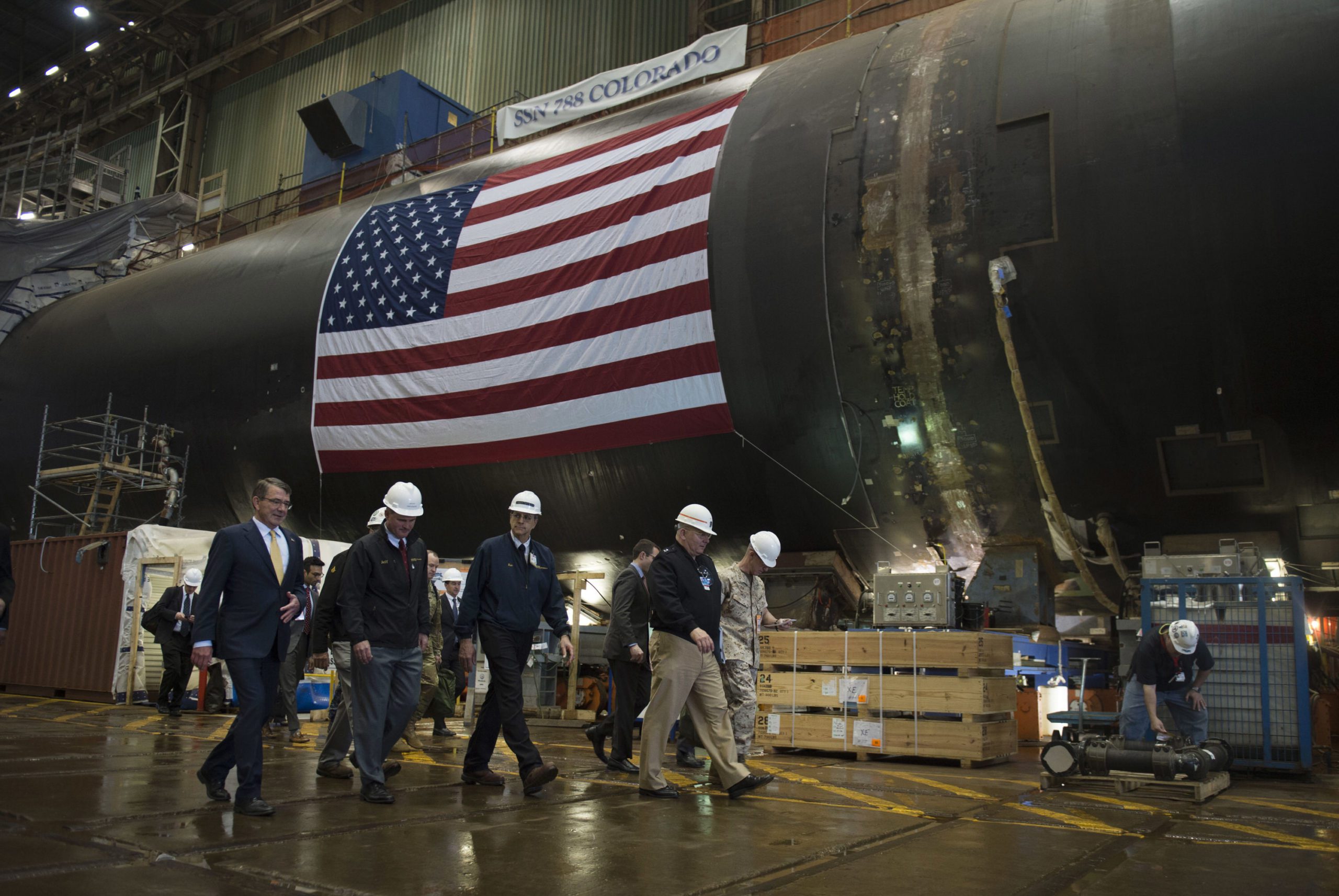UK To Remove Andrew From Role As Royal Navy Vice Admiral
LONDON, Nov 2 (Reuters) – Britain’s former prince Andrew is due to be stripped of his last remaining military position as part of King Charles’ decision to remove his brother from public...

By Tony Capaccio (Bloomberg) Officials overseeing development of the US Navy’s next-generation submarine to carry nuclear missiles don’t have the information they need to know whether the first vessel in the $132 billion Columbia program can deploy on time in 2031, an unreleased congressional audit found.
Navy and Pentagon officials “have not obtained the schedule data and statistical information needed to confidently determine the likelihood that the shipbuilders can accomplish it as planned,” the Government Accountability Office said in the report, which was delivered in September but hasn’t been made public.
The 12-ship Columbia class is set to replace the current fleet of 14 Ohio class ballistic-missile submarines. It’s envisioned as a key component of the US nuclear deterrence strategy into the late 21st century, complementing intercontinental ballistic missiles and air-launched weapons in the nation’s nuclear triad. The first ship is estimated by the Congressional Budget Office to cost $15 billion in 2022 dollars, one of the costliest US weapons systems ever.
General Dynamics and Huntington Ingalls Industries are building the Columbia, and the first sub is about one-third complete, according to a General Dynamics spokesman. The spokesman said the company declined to comment on the GAO report.
Also Read: Australia To Fast-Track US Nuclear Submarine Plans
The GAO said “the Navy’s ability to manage the program to achieve on-time delivery and is incongruous with the importance it placed on having the lead submarine for its first patrol on time.” Since “no schedule risk analysis has been completed,” Navy and Pentagon “decision makers have yet to be provided detailed information about schedule risk to help inform oversight and buying decisions.”
The GAO’s summary, obtained by Bloomberg News, doesn’t say why auditors believe the Navy isn’t getting the information it needs. The report is being withheld from general distribution under the expanding use of the designation of “Controlled Unclassified Information,” or CUI, by the Defense Department. In this case, the Navy applied the label limiting public release but is working with the GAO to allow a sanitized version to be made public.
The Navy disputes the GAO finding, saying in a statement that it receives “detailed schedule information from the shipbuilders on a routine basis, and performs several types of schedule evaluation on this information.”
Top Navy officials told reporters last week that the program was on track, though it wouldn’t meet an earlier-than-scheduled delivery date officials had once aspired to.
Related Book: Blind Man’s Bluff: The Untold Story Of American Submarine Espionage by Sherry Sontag
“I’m optimistic with Columbia that it will stay on pace,” Chief of Naval Operations Admiral Mike Gilday, chief of naval operations, said. “We have to.”
But the GAO report cast doubt on such optimism. It said the Columbia’s importance gives it priority access to resources but that “comes at the expense of the Navy’s other shipbuilding priorities.” That includes the Virginia-class attack submarine, which is also built by General Dynamics and Huntington Ingalls, and has seen cost overruns and delivery delays.
The last year has “brought to light gaps in planning and weaknesses in the Navy’s ability to simultaneously execute the Columbia and Virginia-class programs,” GAO said.
Acting Pentagon Assistant Secretary for Acquisition and Sustainment Tanya Skeen “partially concurred” with the GAO’s recommendation for a new risk assessment in a written reply to the GAO, saying her office would pick an organization independent of the Columbia program office to to conduct it.
In a report last month accompanying the $1.75 trillion spending bill for this fiscal year, House and Senate appropriators expressed “continued concern” with what they called the Columbia’s “schedule variances.” In a Dec. 21 report, the Congressional Research Service noted the current schedule “has little margin for absorbing unforeseen delays.”
“GAO is preparing a publicly releasable version of this report in coordination with the Navy,” said spokesman Lt Commander Javan Rasnake. “The Navy is following the standard best practice of conducting a rigorous review of the material to ensure operational security is maintained. The Navy will comment on the report when the publicly releasable version is released.”
The report is titled “Columbia Class Submarine: Program Lacks Essential Schedule Insight amid Continuing Construction Challenges.”
Related Book: Blind Man’s Bluff: The Untold Story Of American Submarine Espionage by Sherry Sontag
By Tony Capaccio © 2023 Bloomberg L.P.

Sign up for gCaptain’s newsletter and never miss an update

Subscribe to gCaptain Daily and stay informed with the latest global maritime and offshore news
Essential news coupled with the finest maritime content sourced from across the globe.
Sign Up